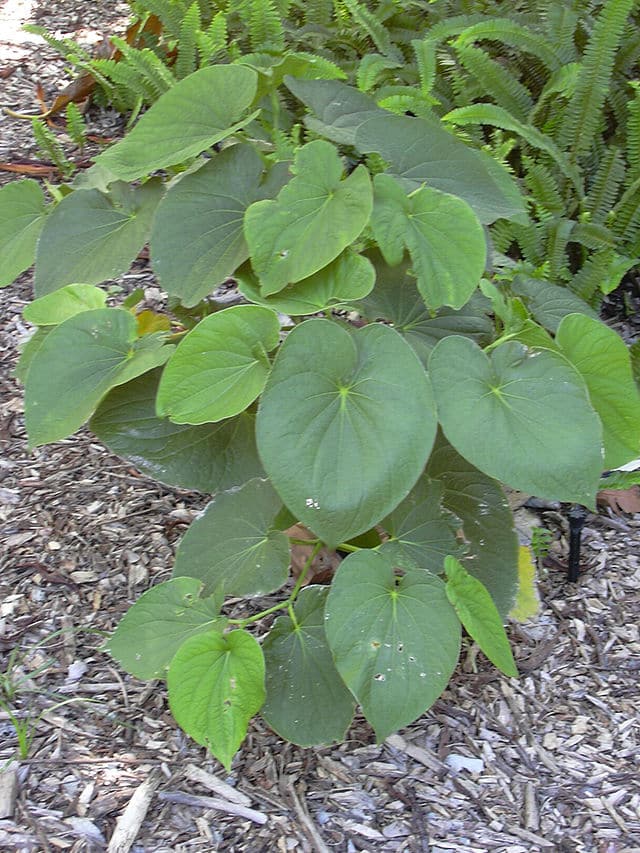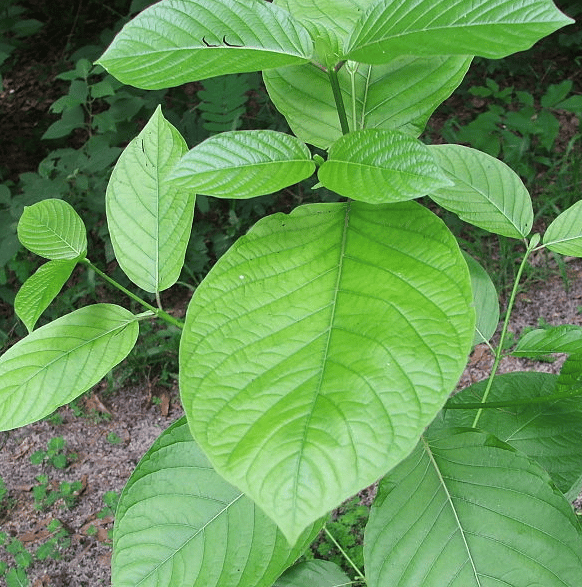
Kava and kratom are tropical plants native to the Pacific Islands and Southeast Asia, respectively. They have some similar effects, but they are also different in many ways.
Kava is a shrub that is native to the Pacific Islands. The roots of the kava plant are used to make a drink that is consumed for ceremonial, medicinal, and social purposes. In traditional Pacific Island medicine, kava has been used to treat anxiety, stress, and insomnia. It is also believed to have pain-relieving and muscle-relaxing properties.
Kratom, on the other hand, is a tree that is native to Southeast Asia. The leaves of the kratom plant are used for medicinal and recreational purposes. The leaves contain compounds that can have stimulant or sedative effects, depending on the dose. In traditional medicine, kratom has been used to treat a variety of conditions, including diarrhea, muscle pain, and cough. In recent years, it has also been used as an alternative to opioids for pain relief.
Some key differences between kava and kratom include their origins, the parts of the plant that are used, and their effects. Kava is native to the Pacific Islands and kratom is native to Southeast Asia. Kava uses the roots of the plant and kratom uses the leaves. Kava has sedative and relaxing effects, while kratom can have stimulant or sedative effects. It is important to note that both kava and kratom are not approved by the FDA for medical use in the United States and more research is needed to understand their safety and effectiveness.
East Vs. West Culture: The History Of Kratom And Kava

Kratom is a tropical tree native to Southeast Asia. It has a long history of use in that region, dating back hundreds of years. It is a member of the coffee family and its leaves are used for medicinal and recreational purposes. The leaves contain compounds that can have stimulant or sedative effects, depending on the dose. In traditional medicine, kratom has been used to treat a variety of conditions, including diarrhea, muscle pain, and cough. In recent years, it has also been used as an alternative to opioids for pain relief.
Kava, on the other hand, is a tropical shrub native to the Pacific Islands. It has been used for centuries by Pacific Island cultures for its sedative and relaxing effects. The roots of the kava plant are used to make a drink that is consumed for ceremonial, medicinal, and social purposes. In traditional Pacific Island medicine, kava has been used to treat anxiety, stress, and insomnia. It is also believed to have pain-relieving and muscle-relaxing properties. In recent years, kava has gained popularity in other parts of the world as a natural alternative to pharmaceutical drugs for anxiety and insomnia.
The Similarities And Differences In How Kava And Kratom Are Prepared And Consumed
Kava and kratom are prepared and consumed differently. Kava is typically prepared by grinding the roots of the kava plant into a powder. The powder is then mixed with water and strained to produce a drink. The resulting drink has a bitter and earthy taste, and is typically consumed in a ceremonial setting.
Kratom, on the other hand, is typically consumed as a powder or tea. The leaves of the kratom plant are dried and then ground into a fine powder. The powder can be mixed with water or another liquid to make a tea, or it can be taken in capsule form. Kratom tea has a bitter taste, so many people mix it with other ingredients, such as honey or fruit juice, to make it more palatable. Some people also chew the leaves of the kratom plant directly, or smoke the dried leaves.
Overall, the main difference in how kava and kratom are prepared and consumed is the form in which they are taken. Kava is typically prepared as a drink, while kratom is consumed as a powder or tea.
The Pharmacological Differences Between Kava And Kratom
Kava and kratom are both tropical plants that have psychoactive effects. However, they have different active compounds and produce different effects.
The roots of the kava plant contain compounds called kavalactones, which are believed to be responsible for its psychoactive effects. Kavalactones are thought to interact with the limbic system, which is the part of the brain involved in emotional processing, to produce feelings of relaxation and well-being. Kava is generally considered to have sedative and anxiolytic (anxiety-reducing) effects, and it is commonly used to treat anxiety and insomnia.
The leaves of the kratom plant, on the other hand, contain compounds called alkaloids, which are responsible for its psychoactive effects. The most well-known alkaloid in kratom is called mitragynine, which is thought to interact with opioid receptors in the brain to produce feelings of pain relief and euphoria. Kratom can have stimulant or sedative effects, depending on the dose. At low doses, it is believed to have stimulant effects, while at higher doses, it can have sedative effects. Kratom is commonly used to treat pain and as an alternative to opioids.
The main pharmacological difference between kava and kratom is the type of active compound they contain. Kava contains kavalactones, which are believed to produce sedative and anxiolytic effects, while kratom contains alkaloids, which can have stimulant or sedative effects depending on the dose. It is important to note that both kava and kratom are not approved by the FDA for medical use in the United States and more research is needed to understand their safety and effectiveness.
Both Kava And Kratom Can Be Addictive, Depending On How You Define Addiction
There is a risk that people who use kratom regularly may develop a dependence on it. Some studies have suggested that kratom may have addictive potential, especially at high doses. It is thought that the active compounds in kratom, called alkaloids, may interact with opioid receptors in the brain and produce feelings of pleasure and pain relief. This can lead to the development of a dependence on kratom, which can cause withdrawal symptoms when the substance is stopped. Overall, while there is a risk of addiction with kratom, more research is needed to fully understand its potential for addiction and the long-term effects of using it.
Just as well, there is also risk that people who use kava regularly may develop a dependence on it. Some studies have suggested that kava may have addictive potential, especially when used at high doses or for long periods of time. It is thought that the active compounds in kava, called kavalactones, may interact with the limbic system, which is the part of the brain involved in emotional processing, to produce feelings of relaxation and well-being. This can lead to the development of a dependence on kava, which can cause withdrawal symptoms when the substance is stopped. In general, while there is a risk of addiction with kava, more research is needed to fully understand its potential for addiction and the long-term effects of using it.
Legal Differences Between Kava And Kratom

The legal status of kava and kratom varies depending on the country or region. In some places, both substances are legal and widely available, while in others, they are illegal or subject to strict regulations.
In some countries, such as the United States, kava and kratom are not currently regulated by the FDA and are legal to sell and possess. However, they are not approved for medical use and their safety and effectiveness have not been established. In other countries, such as Australia and the United Kingdom, kava and kratom are classified as controlled substances and are illegal to sell, possess, or use. In still other countries, such as Germany and Switzerland, kava and kratom are legal but subject to strict regulations, such as requiring a prescription from a healthcare provider.
Overall, the legal status of kava and kratom varies depending on the country or region. It is important to research the local laws and regulations regarding these substances before using them. But if you’re in the US, you’re safe to purchase both.
What Are The Actual Effects Of Kava And Kratom?
Though both substances are plant-based and can be taken for similar conditions, there are distinct differences between the effects produced by kratom and kava. While both induce a relaxation response, kratom is a psychoactive substance with a mind-altering impact on some users.
All strains of kava produce the same relaxed sense of euphoria and pain relief. The same can’t be said for kratom, which comes in different strains that produce their own effect. Some create more of a stimulant response (usually white), while others create more of a sedative response (generally red or green). It’s important to understand these differences when deciding which version of kratom is best for your specific needs. Dosage is also an important factor in determining which effect you’ll get from kratom, which makes it a slightly more temperamental substance than kava.
Kratom Vs. Kava Effects
Kratom has varying effects, depending on the dosage taken.
At a lower dose, kratom acts as a mood booster and a stimulant that is similar to caffeine. Higher doses of kratom cause a narcotic effect that induces relaxation and, in some instances, has been shown to alleviate withdrawal symptoms associated with opioid use.
However, kratom can have the exact opposite of its intended effects if the user does not pay careful attention to dosage.
Kava also brings about a relaxation response without the usual drop in mental acuity that can come from prescription narcotics. It can help make interactions easier without making you feel loopy or dizzy, and this is a much-desired effect for users dealing with anxiety, especially in social settings where behavior is key.
Kava Vs. Kratom For Euphoria
Since both kratom and kava can provide feelings of euphoria that help relieve anxiety, they’re each a worthy choice for altering mood and helpfully reducing stress.
Kava brings about a sense of well-being and has the added benefit of alleviating physical symptoms related to stress, such as muscle spasms and tension.
Kratom also assists with mood elevation as a pain reliever by behaving chemically similar to opiates. This allows it to sometimes be used in place of pain medication, and it is an essential element in mood-boosting.
Kratom’s euphoric effects, however, happen at a higher dosage which means more of it is required to reach the proper concentration and achieve the intended euphoric feeling.
Kava Vs. Kratom For Sleep
When it comes to choosing a sleep aid, the effects produced by both kava and kratom can be of great assistance.
Kratom contains alkaloids which are herbal compounds that alleviate physical pain and help your brain and body relax which can help prepare you for sleep. Higher doses can produce a feeling of euphoria, which can also put you in a relaxed pre-sleep state. Since various strains are available, some produce a better sleep-inducing effect than others.
The sedative effect of kava is also beneficial when regulating your sleep habits. It reduces your anxiety and puts you in a feel-good state of mind that makes for a perfect wind-down sensation at the end of the day. And since kava acts as a relaxant at any dosage, you don’t need to take extra as you do with kratom to attain helpful pre-sleep relaxation.
Kava Or Kratom – Which Is Best For You?
Despite the similarities between kratom and kava, your intended use can help you determine the right supplement for your needs.
If you’re looking for a natural way to alleviate your anxiety and manage your stress levels, then the proper dosage of kava can give you these desired effects. Kava can elevate your mood and gently relax you without causing you to feel sluggish. It can also assist you in achieving a good night’s sleep.
On the other hand, if you’re looking for a pick-me-up that can boost your energy levels, then the right strain of kratom is for you. However, it also does double-duty in higher doses as a pain reliever and as a relaxant when you’re ready for sleep, making kratom a multi-faceted supplement.
Since both substances can result in adverse side effects or interact with certain medications, be sure to consult your doctor before taking kratom or kava to make sure you’re in the right physical and mental state to try them.
Make sure to read our article on where to find the best kava, or check out our kratom reviews!
References
- Bian, T. October 5, 2020. Kava as a Clinical Nutrient: Promises and Challenges. National Center for Biotechnology Information. Retrieved from https://www.ncbi.nlm.nih.gov/pmc/articles/PMC7600512/
- Unknown author. August 2020. Kava. National Center for Complementary and Integrative Health. Retrieved from https://www.nccih.nih.gov/health/kava
- Veltri, C. July 1, 2019. Current Perspectives on the Impact of Kratom Use. National Center for Biotechnology Information. Retrieved from https://www.ncbi.nlm.nih.gov/pmc/articles/PMC6612999/
Editor’s note: we are regularly updating this review. If you see any problems, weird interpretations of the data, or just want to say hi, please reach out to hello@the-unwinder.com.